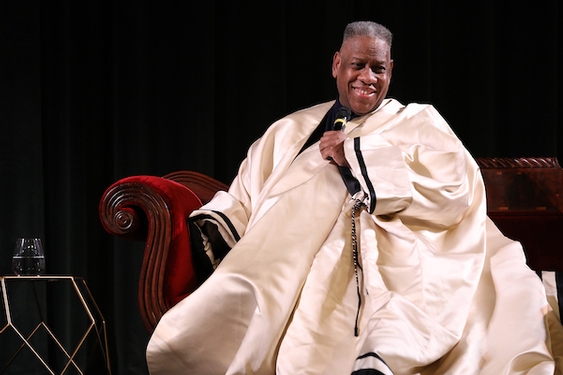Few decades in history have brought more change to retail shopping than the last 10 years.
This year, more than 9,000 retailers went belly-up or closed stores, according to a tally by Business Insider. Payless Shoes, Dress Barn, Barney’s, Gymboree, Sears, Kmart, Charlotte Russ, Chico’s, Gap, Bed Bath and Beyond, and Office Depot were among the long list of legacy retailers that succumbed in the so-called Great Retail Apocalypse of 2019. Before that, David’s Bridal, Brookstone, Claire’s, Bon-Ton, Toys R Us and Sports Authority, among many others, went down with great thuds. Malls struggle to rent empty space.
Many factors played into this astonishing transformation of the retail landscape. Here is a look back at some of the profound shifts in shopping from 2010 to 2019.
Amazon: The retailer, which began as an online bookseller in 1994, has profoundly influenced and changed how we shop. It now dominates every aspect of retail. Just a few years ago, it seemed unimaginable that millions of us would be forking over $119 a year for the privilege of shopping online. Still, Amazon has managed near total destruction of retail and it is only going to get bigger, with its long tentacles touching and shaping how and when we shop. While Amazon didn’t share sales figures, Cyber Monday was the biggest shopping day in the company’s history. That played into a record $9.4 billion in sales on Cyber Monday, an all-time record this year. Walmart and Target are effectively competing, and have an advantage with thousands of physical stores. That has Amazon playing catch-up after acquiring Whole Foods Market in 2017, with plans to open dozens of grocery and Amazon Go convenience stores, sans cashiers. Amazon now has the $840 billion grocery market in its crosshairs. Prepare for similar disruption ahead.
The Great Recession: The collapse of the United States real estate market in 2007 caused a calamitous financial crisis that would reverberate through much of this decade, setting in motion a decade-long obsession with savings that became a survival tactic for many struggling consumers. Companies shed more than 8.8 million jobs as median household wealth fell 35 percent, from $106,591 to $68,839 between 2005 and 2011, according to the Center on Budget Policy and Priorities. The unemployment rate did not return to 5 percent, where it was at the start of the recession, until late 2015. South Florida suffered more during the recession than almost any other place in the country, thanks to a housing bubble and bust, a 2010 Brookings Institution study showed. The recession made using coupons and hunting down deals cool, ushering in the era of discount chains. Marshalls and TJ Maxx, long fixtures in off-price retail, had to move over as chains with cheap merchandise started popping up and prospering while legacy retailers struggled to adapt.
Discount retailers: Thanks to the recession, everyone needed to save a buck. Dollar Tree, Ross Dress for Less, DD’s Discounts, Tuesday Morning, Big Lots, Five Below and other off-price chains began to multiply like rabbits. Macy’s, Saks Fifth Avenue, Nordstrom, Bloomingdales and others began opening and expanding outlets. This paved the way for a 2014 expansion at megamall Sawgrass Mills in Sunrise when it broke ground on the 80,000-square-foot Colonnade Outlets, an open-air promenade that today houses a bevy of luxury stores such as Gucci, Prada, and Coach. Discounters added pressure on brick-and-mortar legacy retailers such as Sears, Kmart, JC Penney and others to transform their business models with a multifaceted approach to sales or risk certain death.
“Extreme couponing”: A 2011 reality show about super couponers ushered in the gluttonous era of shelf-clearing at the grocery store. The weekly show that aired for five seasons on TLC would feature shoppers clipping hundreds of coupons, and then planning and executing megahauls of food and goods carried out of grocers for free. Viewers were treated to expansive panoramas of their neat stockpiles showcasing hundreds of bottles of mustard, body wash, toilet paper and Tide. The show spawned a legion of followers that eventually forced grocery stores and food companies to rewrite coupon -redemption policies and limit quantities. The craze prompted coupon theft, too. The Broward County Sheriff nabbed coupon crooks who drove around stealing inserts from newspaper boxes. Thanks to the show, coupon expiration dates are shorter than they have ever been, with little to no savings on fresh food.
Any way you want it: As the decade progressed, Amazon’s dominance made it necessary for retailers to provide customers with a seamless shopping experience no matter how they wanted to make purchases. This omni-channel strategy offers consumers a seamless experience in stores and online along with convenient services such as free in-store pickup and two-day delivery. Today, Sears and Kmart are on life support because they were unable to evolve quickly enough in this arena. JC Penney struggles. Target, Walmart, Best Buy, Macy’s and Kohl’s have thrived.
Going mobile: When Apple introduced the iPhone in 2007, few of us grasped how it would change so many things. It took a few years to catch on, but by 2010, we began paying hundreds of dollars for handheld devices for everyone in the family and also paying wireless phone bills that rival some mortgages. This Cyber Monday mobile transactions soared, with $3.1 billion of sales coming from smartphones, a record. Now we use these devices to ring up savings, log into loyalty programs, store coupons in mobile wallets, get text alerts, research products and make purchases. Stores use smartphones and apps to track our movements and spending when in stores and market their products.
Hearing voices: Remember Hal 9000 in “2001: A Space Odyssey”? The 1968 film was a decade off in predicting the advent of artificial intelligence. Apple made Siri available on iPhones in 2011. Amazon introduced its voice assistant, Alexa, on Echo devices in 2014. Then Google introduced its assistant in 2016. Now, we’re all talking to computers — which are eavesdropping on us 24/7 — asking them to turn on music, order items off the internet, make grocery lists and remind us of everything from soccer practice to doctors appointments.
Christmas creep: In 2010, Black Friday began to morph into Gray Thursday as a few retailers began carving into holiday traditions by luring shoppers to openings on Thanksgiving. They dutifully lined up on the holiday to snap up cheap TVs and other electronics. Traditionally, retailers opened in the wee hours on Black Friday, which signaled the official beginning of the Christmas shopping season. Toys R Us got the ball rolling, with a 10 p.m. Thursday opening. Soon, the list of retailers opening on the holiday grew with Target, Macy’s, Best Buy, Kohl’s, Sears, Kmart and other big-box retailers ringing up big sales. It took time, but it worked. This year, consumers spent $4.2 billion on Thanksgiving, a record high, up 14.5% from last year, according to Adobe.
Old is new: More recently, thrift-store shopping and resale sites such as PoshMark, The RealReal and ThredUp came into vogue, quenching a thirst for discounted, used luxury designer goods from Chanel, Louis Vuitton and Gucci. Millennials also are driving growth in this sustainability trend. Shoppers also began renting clothes and high-end accessories and signing up in droves for monthly subscription services for everything from food to fashions.
Dawn of delivery: Early in the decade, DoorDash and Instacart began same-day grocery delivery. Then Shipt popped up and got gobbled up by Target in 2017. Now, most retailers, including Walmart, offer this service. But American consumers have been slow to embrace online grocery delivery, which captures only 3% of spending online, according to a 2019 report by Bain & Company and Google. But guess who dominates this area? Amazon. It has a market-leading share of online grocery purchases, estimated to be as high as to 38%. The Great Retail Apocalypse is far from over, as Amazon turns its attention to the robust grocery business in the next decade.
How will we pick a melon in 2029? Only time will tell.
———
©2019 Sun Sentinel (Fort Lauderdale, Fla.)
Visit the Sun Sentinel (Fort Lauderdale, Fla.) at www.sun-sentinel.com
Distributed by Tribune Content Agency, LLC.












